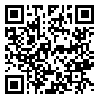Volume 17, Issue 4 (3-2020)
sjsph 2020, 17(4): 397-408 |
Back to browse issues page
Download citation:
BibTeX | RIS | EndNote | Medlars | ProCite | Reference Manager | RefWorks
Send citation to:



BibTeX | RIS | EndNote | Medlars | ProCite | Reference Manager | RefWorks
Send citation to:
Panahi R, Dehghankar L, Shafaei M, Razaghpoor A. Health Literacy Skills Effective in Predicting Adoption of Osteoporosis Preventive Behaviors in High School Female Students. sjsph 2020; 17 (4) :397-408
URL: http://sjsph.tums.ac.ir/article-1-5824-en.html
URL: http://sjsph.tums.ac.ir/article-1-5824-en.html
1- 1- P.h.D. in Health Education & Priomotion, School of Medical Sciences, Tarbiat modares University, Tehran, Iran
2- 2- Department of Nursing, Social Determinants of Health Research Center, School of Nursing & Midwifery, Qazvin University of Medical Sciences, Qazvin, Iran ,L.dehqankar@qums.ac.ir
3- Department of Nursing, Social Determinants of Health Research Center, School of Nursing & Midwifery, Qazvin University of Medical Sciences, Qazvin, Iran
4- Students of Nursing, Student Research Committee, School of Nursing & Midwifery, Qazvin University of Medical Sciences, Qazvin, Iran.
2- 2- Department of Nursing, Social Determinants of Health Research Center, School of Nursing & Midwifery, Qazvin University of Medical Sciences, Qazvin, Iran ,
3- Department of Nursing, Social Determinants of Health Research Center, School of Nursing & Midwifery, Qazvin University of Medical Sciences, Qazvin, Iran
4- Students of Nursing, Student Research Committee, School of Nursing & Midwifery, Qazvin University of Medical Sciences, Qazvin, Iran.
Abstract: (3630 Views)
Background and aim: Health literacy can be one of the most important effective factors in the adoption of preventive behaviors of osteoporosis by raising awareness and understanding the benefits of diagnostic and preventive behaviors. The objective of this study was to determine the health literacy skills effective in predicting adoption of osteoporosis preventive behaviors in high school female students.
Materials and methods: This was a descriptive cross-sectional study including 375 high school girls in Qazvin, Iran, selected by multi-stage sampling. Data were collected using the standard Health Literacy Measure for Adolescents (HELMA) and the Preventive Behavior of Osteoporosis Measurement questionnaires. The data were analyzed using the statistical software SPSS-23, the tests being descriptive statistics, Spearman correlation coefficient and multiple regression analysis.
Results: Two of the eight components of health literacy, namely, understanding and communication, and two, namely usage of health information and calculation, were found to receive the highest and the lowest mean scores, respectively. The total scores of health literacy and the adoption of preventive behaviors of osteoporosis were 70.84±12.58 (out 100) and 22.43±5.60 (out of 36), respectively. Multiple regression analysis showed that the components of health literacy could predict 38.4% of the changes in the adoption of preventive behaviors of osteoporosis (R2 = 0.384). The only other predictor of adoption of behavior was the usage of health information (P=0.001، β=0.044).
Conclusion: Based on the findings of this study, it is recommended to pay special attention, when developing educational programs for the prevention of osteoporosis in adolescents, to health literacy as a whole, especially the usage of health information component.
Materials and methods: This was a descriptive cross-sectional study including 375 high school girls in Qazvin, Iran, selected by multi-stage sampling. Data were collected using the standard Health Literacy Measure for Adolescents (HELMA) and the Preventive Behavior of Osteoporosis Measurement questionnaires. The data were analyzed using the statistical software SPSS-23, the tests being descriptive statistics, Spearman correlation coefficient and multiple regression analysis.
Results: Two of the eight components of health literacy, namely, understanding and communication, and two, namely usage of health information and calculation, were found to receive the highest and the lowest mean scores, respectively. The total scores of health literacy and the adoption of preventive behaviors of osteoporosis were 70.84±12.58 (out 100) and 22.43±5.60 (out of 36), respectively. Multiple regression analysis showed that the components of health literacy could predict 38.4% of the changes in the adoption of preventive behaviors of osteoporosis (R2 = 0.384). The only other predictor of adoption of behavior was the usage of health information (P=0.001، β=0.044).
Conclusion: Based on the findings of this study, it is recommended to pay special attention, when developing educational programs for the prevention of osteoporosis in adolescents, to health literacy as a whole, especially the usage of health information component.
Type of Study: Research |
Subject:
Public Health
Received: 2020/04/19 | Accepted: 2020/04/19 | Published: 2020/04/19
Received: 2020/04/19 | Accepted: 2020/04/19 | Published: 2020/04/19
Send email to the article author
| Rights and permissions | |
 |
This work is licensed under a Creative Commons Attribution-NonCommercial 4.0 International License. |





